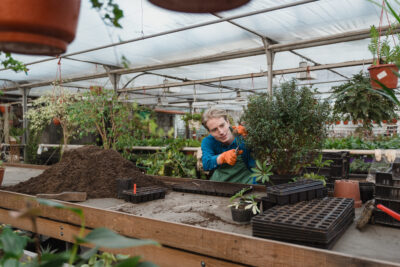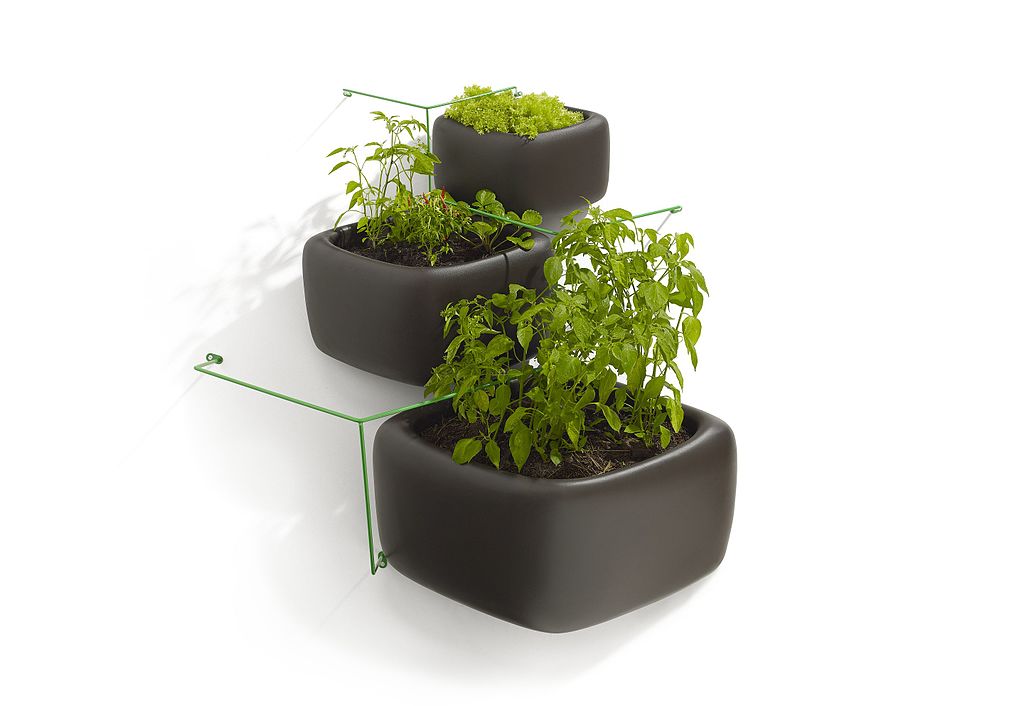
Can Succulents Thrive in Water Instead of Soil?

Succulents have become incredibly popular in recent years due to their unique and eye-catching appearance. These plants are known for their ability to store water in their leaves and stems, making them highly resilient to dry conditions. Typically, succulents are grown in well-draining soil that allows excess water to escape. However, there has been a growing trend of growing succulents in water, without any soil at all. This raises the question: can succulents thrive in water instead of soil?
We will explore the concept of growing succulents in water and discuss the benefits and drawbacks of this method. We will delve into the science behind why succulents are able to survive and even thrive in water, as well as provide tips and guidelines for successfully growing succulents in a water-based environment. Additionally, we will address common misconceptions and challenges associated with growing succulents in water and offer advice for troubleshooting any issues that may arise. By the end of this article, you will have a comprehensive understanding of whether or not succulents can truly thrive in water and how to care for them if you decide to give it a try.
- Yes, some succulents can thrive in water instead of soil
- Water propagation is a common method for growing succulents
- Place the succulent cutting in a container filled with water
- Change the water every few days to prevent stagnation
- Roots will begin to grow from the cutting after a few weeks
- Once the roots have developed, you can transfer the succulent to soil if desired
- Be aware that not all succulents are suitable for water propagation
- Some succulents prefer well-draining soil for optimal growth
- Experiment with different succulent varieties to see which ones thrive in water
- Remember to monitor the water levels and quality to ensure the succulent's health
- Frequently Asked Questions
Yes, some succulents can thrive in water instead of soil
While most succulents are known for their ability to withstand drought and thrive in well-draining soil, there are actually a few varieties that can be grown in water. This unique method of cultivation, known as water propagation, has gained popularity among succulent enthusiasts in recent years.
Why grow succulents in water?
There are several reasons why some people choose to grow succulents in water instead of soil. One of the main advantages is that it eliminates the risk of overwatering, which is a common cause of root rot in succulents. Water propagation also allows you to closely observe root development, making it easier to monitor the health of your plants. Additionally, growing succulents in water can be a visually appealing way to display your plants, as you can use clear glass containers or vases to showcase the intricate root systems.
Which succulents can be grown in water?
Not all succulents can be grown successfully in water, as their roots are adapted to store water and nutrients from the soil. However, there are a few varieties that are more suited to this method of cultivation. Some popular succulents that can be grown in water include:
- Devil's Ivy (Epipremnum aureum): Also known as Pothos, Devil's Ivy is a trailing succulent with heart-shaped leaves that can easily be propagated in water.
- Lucky Bamboo (Dracaena sanderiana): While not a true succulent, Lucky Bamboo is often included in water propagation projects due to its ability to grow in water indefinitely.
- Jade Plant (Crassula ovata): Jade plants are known for their thick, fleshy leaves and can be propagated in water, although they may take longer to root compared to other succulents.
It's important to note that while these succulents can tolerate growing in water, they still require some nutrients to thrive. Adding a diluted liquid fertilizer to the water every few weeks can help provide the necessary nutrients for healthy growth.
 Cactus and Succulent Care: How Often Should You Water These Plants?
Cactus and Succulent Care: How Often Should You Water These Plants?How to propagate succulents in water
Propagating succulents in water is a simple process that can be done using the following steps:
- Select a healthy succulent: Choose a mature succulent with several leaves that you would like to propagate.
- Remove a leaf: Gently twist a leaf from the stem of the succulent, ensuring that it is intact and undamaged.
- Place the leaf in water: Fill a glass container with water and submerge the base of the leaf, making sure that the stem is submerged but the leaf is not touching the water.
- Wait for roots to develop: Place the container in a bright, indirect light location and wait for roots to develop, which usually takes a few weeks.
- Transplant the rooted leaf: Once roots have formed, carefully transfer the rooted leaf to a well-draining soil mix, and continue to care for it as you would a regular succulent.
Remember to change the water regularly to prevent the growth of algae and bacteria. If you notice any signs of rot or decay, it's best to remove the affected leaf to prevent it from spreading to the healthy ones.
While growing succulents in water can be a fun and rewarding experience, it's important to keep in mind that not all succulents are suitable for this method of cultivation. If you're unsure whether a particular succulent can be grown in water, it's always best to do some research or consult with a knowledgeable gardener before attempting water propagation.
So, if you're looking to try something new with your succulents, why not give water propagation a go? It's a great way to expand your collection and explore a different approach to succulent care.
Water propagation is a common method for growing succulents
Water propagation is a common method for growing succulents, as it allows you to propagate new plants from cuttings without the need for soil. This technique is especially popular among succulent enthusiasts who want to expand their collection or share the joy of growing succulents with others.
When it comes to water propagation, succulents are remarkably adaptable. They have evolved to survive in arid conditions, storing water in their leaves, stems, and roots. This unique feature enables them to thrive in water for a certain period of time.
 How Often Should I Water My Succulent Plant?
How Often Should I Water My Succulent Plant?How does water propagation work?
Water propagation involves placing succulent cuttings in water until they develop roots. This process usually takes a few weeks to a couple of months, depending on the succulent species and environmental conditions. It's important to note that not all succulents can be propagated in water, so it's essential to research the specific requirements of the succulent you want to propagate.
The steps for water propagation:
- Start by selecting a healthy succulent cutting. Make sure it is a clean cut and has no signs of disease or rot.
- Allow the cutting to callus over by leaving it in a dry and shaded spot for a few days. This helps prevent rotting during the propagation process.
- Fill a clean container with water, making sure it's deep enough to submerge the bottom part of the cutting without touching any leaves or upper stems.
- Place the cutting in the water, ensuring that only the bottom part is submerged. You can use a clothespin or a toothpick to hold the cutting in place if necessary.
- Find a bright location for the container, but avoid direct sunlight as it can lead to heat stress or sunburn.
- Change the water regularly to prevent the growth of harmful bacteria or fungi. It's recommended to use filtered or distilled water to minimize the risk of mineral buildup.
- Be patient and monitor the progress of the cutting regularly. After a few weeks to months, you should start seeing roots forming from the base of the cutting.
- Once the roots are well-developed, you can carefully transfer the cutting into a well-draining succulent potting mix to continue its growth.
Factors to consider:
- Temperature: Succulents prefer temperatures between 60°F (15°C) to 75°F (24°C) for successful water propagation.
- Light: While bright indirect light is necessary for photosynthesis, direct sunlight can be harmful to succulent cuttings during the propagation process.
- Water quality: Using filtered or distilled water helps prevent mineral buildup and ensures the health of the succulent during water propagation.
Water propagation can be a rewarding and exciting way to grow your succulent collection. It allows you to witness the growth and development of new roots firsthand. However, it's important to remember that not all succulents can be successfully propagated in water, so research and experimentation are key. With proper care and attention, you can enjoy the satisfaction of creating new succulent plants through water propagation.
Place the succulent cutting in a container filled with water
When it comes to growing succulents, most people think that they need to be planted in soil. However, did you know that succulents can actually thrive in water too? It's true! If you're looking for an alternative way to grow your succulents, water propagation might be just what you need.
To get started, simply take a cutting from your succulent plant. Make sure that the cutting is healthy and has a few leaves attached to it. Once you have your cutting, place it in a container filled with water.
 Choosing the Right Water for Succulents: Tap, Filtered, or Distilled?
Choosing the Right Water for Succulents: Tap, Filtered, or Distilled?The importance of choosing the right container
When choosing a container for water propagation, it's important to pick one that is suitable for the size of your cutting. A small glass or jar works well for individual cuttings, while a shallow tray or dish can be used for multiple cuttings.
Make sure that the container you choose has enough room for the roots to grow. If the container is too small, the roots may become crowded and hinder the growth of the succulent.
Ensuring proper light and temperature
Once you have placed your succulent cutting in water, it's important to provide it with the right amount of light and temperature. Succulents thrive in bright, indirect light, so place your container near a window where it can receive plenty of sunlight.
It's also important to keep the water at a consistent temperature. Succulents prefer temperatures between 60°F and 80°F (15°C and 27°C). Avoid placing the container in an area that experiences extreme temperature fluctuations, such as near a heating vent or drafty window.
Changing the water regularly
While succulents can thrive in water, it's crucial to change the water regularly to prevent the growth of bacteria or mold. Every few days, empty the container and fill it with fresh, clean water.
Additionally, if you notice any discoloration or cloudiness in the water, it's a sign that the water needs to be changed immediately. Keeping the water clean and fresh will ensure the health and growth of your succulent cutting.
Conclusion
 Succulent Survival: Impact of Long-Term Water Neglect
Succulent Survival: Impact of Long-Term Water NeglectContrary to popular belief, succulents can indeed thrive in water instead of soil. By following the proper techniques and providing the right conditions, you can successfully propagate your succulent cuttings in water. So go ahead and give it a try – you might be pleasantly surprised by the results!
Change the water every few days to prevent stagnation
Can Succulents Thrive in Water Instead of Soil?
Many gardeners are familiar with the idea of growing plants in soil, but have you ever wondered if succulents can thrive in water instead? While succulents are known for their ability to withstand drought conditions, growing them in water poses a unique set of challenges. In this article, we will explore whether succulents can truly thrive in water and provide tips for successfully growing them in this unconventional medium.
Change the water every few days to prevent stagnation
One of the most important considerations when growing succulents in water is to ensure that the water does not become stagnant. Stagnant water can lead to the growth of harmful bacteria and fungi, which can cause root rot and ultimately kill your succulent. To prevent stagnation, it is crucial to change the water every few days. This will help maintain a clean and oxygenated environment for your succulent's roots.
Roots will begin to grow from the cutting after a few weeks
When propagating succulents, one popular method is to grow them in water instead of soil. This technique involves taking a cutting from the mother plant and allowing it to develop roots in a water-filled container. While succulents are typically known for their ability to thrive in arid conditions with minimal water, some varieties can also adapt to growing in water.
 DIY Tips for Perfect Succulent Soil: Essential Tricks
DIY Tips for Perfect Succulent Soil: Essential TricksAfter a few weeks, you will start to notice tiny roots emerging from the base of the cutting. These roots are a sign that the succulent is successfully establishing itself in water. This method can be a great way to propagate your succulent collection and create new plants without the need for soil.
It is important to note that not all succulents are suitable for growing in water. Some varieties are more adaptable to this method, while others may struggle to survive without the support of soil. It is crucial to research the specific succulent species you are working with to determine if they can thrive in water.
Advantages of growing succulents in water
- Easy propagation: Growing succulents in water can be a simple and effective way to propagate new plants. It allows you to create multiple plants from a single cutting, expanding your succulent collection without much effort.
- No need for soil: Some people prefer growing succulents in water because it eliminates the need for soil. This can be beneficial for those who struggle with soil-related issues such as pests, drainage problems, or poor-quality soil.
- Observation and control: When growing succulents in water, you have a clear view of the roots and can easily monitor their growth. This allows you to observe the development of the plant and make adjustments as needed.
Disadvantages of growing succulents in water
- Potential for root rot: Succulents are adapted to store water in their leaves and stems, making them susceptible to root rot if exposed to excessive moisture. Growing succulents in water requires careful monitoring to prevent waterlogging and ensure the roots remain healthy.
- Limited nutrient availability: While water can provide some nutrients, it may not be sufficient to sustain the long-term health of succulents. Without the nutrients found in soil, succulents grown solely in water may eventually show signs of nutrient deficiencies.
- Transition to soil: If you decide to transition your succulent from water to soil, it may take some time for the plant to adjust. The roots will need to adapt to the new environment and establish themselves in the soil, which can be a delicate process.
Growing succulents in water can be a fascinating experiment and a viable method for propagation. However, it is essential to choose the right succulent species, monitor the water levels, and provide the necessary nutrients for long-term success. Whether you decide to grow your succulents in water or soil, both methods can result in beautiful and thriving plants.
Once the roots have developed, you can transfer the succulent to soil if desired
Once the roots of your succulent have developed and become strong enough, you have the option to transfer it to soil if you prefer. While succulents are known for their ability to thrive in arid conditions and require minimal watering, they are naturally adapted to grow in soil.
Transferring your succulent to soil can provide it with additional nutrients and stability. However, it is important to note that succulents can still thrive in water if you choose to keep them in a water-based environment.
If you decide to transfer your succulent to soil, here are a few steps to follow:
 Is it safe to water succulents with ice cubes?
Is it safe to water succulents with ice cubes?1. Choose the Right Soil
When selecting soil for your succulent, opt for a well-draining mix. Succulents need soil that allows excess water to flow through easily, preventing root rot. A good succulent soil mix typically consists of coarse sand, perlite, and a well-draining potting mix.
2. Select a Suitable Container
Choose a container with drainage holes to ensure proper water flow. Succulents should never sit in standing water as it can lead to overwatering and root rot. Additionally, consider the size of the container and make sure it provides enough space for your succulent to grow.
3. Gently Remove the Succulent from Water
When moving your succulent from water to soil, be careful not to damage the fragile roots. Gently remove the succulent from the water, ensuring that all the roots are intact.
4. Prepare the Soil
Prepare the soil mixture by combining the well-draining potting mix, coarse sand, and perlite. Mix them thoroughly to create an optimal environment for your succulent's roots.
5. Plant the Succulent
Make a small hole in the soil mixture and carefully place the succulent's roots into it. Gently press the soil around the base of the plant to secure it in place. Ensure that the succulent is positioned at the same depth as it was in the water.
6. Water and Monitor
After planting, water the succulent lightly to help settle the soil around the roots. Avoid overwatering, as this can lead to root rot. Monitor the moisture level of the soil and water only when it feels dry to the touch.
Note: While succulents can be transferred to soil, they can also continue to thrive in water if you prefer to keep them in a water-based environment. It ultimately depends on your personal preference and the specific needs of your succulent.
 Choosing the Ideal Soil for Beginner Succulent Growers
Choosing the Ideal Soil for Beginner Succulent GrowersBe aware that not all succulents are suitable for water propagation
When it comes to propagating succulents, the most common method is by using soil. However, there is a growing trend of propagating succulents in water. While it may seem like an easy and convenient alternative, it's important to be aware that not all succulents are suitable for water propagation.
Water propagation works best for succulents that have thick, fleshy leaves capable of storing water. These plants are adapted to survive in arid conditions and have evolved to tolerate drought. Succulents such as jade plants (Crassula ovata), paddle plants (Kalanchoe thyrsiflora), and the popular string of pearls (Senecio rowleyanus) are among the many varieties that can thrive in water.
However, some succulents are not suited for water propagation due to their delicate nature or specific root requirements. Succulents with thin leaves, such as echeverias, are more prone to rot when placed in water for extended periods. Additionally, succulents with specialized root structures, like lithops or living stones, have unique needs that cannot be met through water propagation alone.
It's important to research the specific succulent species you want to propagate to determine if it is suitable for water propagation. This will help ensure the success of your propagation efforts and the health of your plants.
Some succulents prefer well-draining soil for optimal growth
Succulents are known for their ability to store water in their leaves, stems, and roots, allowing them to survive in arid conditions. However, when it comes to their preferred growing medium, most succulents thrive in well-draining soil rather than water. While it is possible to grow succulents in water, it is important to understand that not all succulents can adapt to this growing method.
Succulents typically have shallow root systems that are designed to absorb water quickly and efficiently. In a well-draining soil mixture, excess water can easily escape, preventing the roots from sitting in stagnant water, which can lead to root rot. This is why it is crucial to provide succulents with a growing medium that allows for proper drainage.
 Do Succulent Roots Penetrate Deep into the Soil?
Do Succulent Roots Penetrate Deep into the Soil?Benefits of well-draining soil for succulents:
- Prevents root rot: Well-draining soil allows excess water to escape, reducing the risk of root rot.
- Provides aeration: Properly draining soil allows air to circulate around the roots, preventing suffocation and promoting healthy growth.
- Prevents overwatering: With well-draining soil, it's easier to control the amount of water your succulents receive, reducing the risk of overwatering.
- Reduces the likelihood of pests and diseases: Stagnant water can attract pests and promote the growth of harmful fungi and bacteria. Well-draining soil helps minimize these risks.
Can succulents be grown in water?
While succulents can survive in water for a short period, it is not their preferred method of growth. Some succulents, such as certain types of sedums and jade plants, have a higher tolerance for water and can be successfully grown in water for extended periods. However, even these succulents should be transitioned to soil eventually to ensure their long-term health.
If you are interested in growing succulents in water, it is important to choose varieties that are more adaptable to this growing method. Additionally, it is crucial to monitor the water quality and change it regularly to prevent the growth of harmful bacteria and algae.
While some succulents can tolerate growing in water, most prefer well-draining soil for optimal growth. Providing your succulents with a suitable soil mixture that allows for proper drainage will help ensure their health and longevity.
Experiment with different succulent varieties to see which ones thrive in water
If you're a succulent enthusiast, you may have wondered if these hardy plants can survive solely in water instead of traditional soil. While succulents are known for their ability to store water in their leaves and stems, they are typically grown in well-draining soil. However, there are some succulent varieties that can thrive in water, and it can be a fun experiment to see which ones adapt well to this alternative growing method.
 Avoid Overwatering: Tips for Healthy Succulents
Avoid Overwatering: Tips for Healthy SucculentsBefore you start:
- Make sure you have healthy succulent cuttings or plants to use for your experiment.
- Choose clear glass containers that will allow you to observe root growth and monitor water levels.
- Use filtered or distilled water to prevent the buildup of mineral deposits.
1. Jade Plant (Crassula ovata)
Jade plants are an excellent choice for growing in water. Their thick, fleshy leaves and sturdy stems make them well-suited for this type of cultivation. Take a healthy jade plant cutting and place it in a glass container filled with water. Ensure that the bottom of the cutting is submerged, but not the entire stem. Place the container in a bright location, but away from direct sunlight. Change the water every two weeks to prevent stagnation.
2. String of Pearls (Senecio rowleyanus)
The unique trailing stems of the string of pearls succulent make it an intriguing candidate for water propagation. Take several cuttings with at least three to four pearls each and place them in a glass container filled with water. Make sure the pearls are partially submerged in water. Position the container in a bright spot with indirect sunlight. Change the water every two weeks to keep it fresh.
3. Christmas Cactus (Schlumbergera spp.)
Christmas cacti are known for their vibrant blooms during the holiday season. These succulents can also be grown in water successfully. Take a healthy Christmas cactus cutting and place it in a glass container filled with water. Ensure that the bottom segment of the cutting is submerged in water. Position the container in a well-lit area, but away from direct sunlight. Change the water every two weeks to maintain its clarity.
While these are just a few examples, there are other succulent varieties that can thrive in water. Experimenting with different types of succulents can be an exciting and educational journey. Remember to be patient and observe the progress of your plants. Not all succulents will adapt well to water cultivation, so it's important to continue providing proper care and soil for the majority of your collection.
Remember to monitor the water levels and quality to ensure the succulent's health
When it comes to caring for succulents, most people are familiar with the traditional method of planting them in well-draining soil. However, did you know that succulents can also thrive in water? This alternative method of cultivation, known as water propagation, has gained popularity among succulent enthusiasts.
 The Impact of Shallow Root Systems on Succulent Plants
The Impact of Shallow Root Systems on Succulent PlantsWater propagation involves placing the succulent cuttings or leaves in water instead of soil. The plant absorbs water through its roots, allowing it to grow and develop. While this method may seem unconventional, it offers several benefits for succulent lovers.
The Benefits of Water Propagation
- Easy root development: Water propagation can accelerate root growth, making it an excellent method for propagating succulents. This is especially useful when you need to multiply your succulent collection quickly.
- Visible root growth: With water propagation, you can easily observe the development of roots. This allows you to monitor the health and progress of your succulent, ensuring that it is growing properly.
- No risk of overwatering: One common challenge in succulent care is overwatering. With water propagation, you have better control over the water supply, reducing the risk of overwatering and root rot.
- More forgiving for beginners: Water propagation is a forgiving method for beginners, as it allows them to experiment and learn about the growth patterns and needs of succulents.
Monitoring Water Levels and Quality
While water propagation can be beneficial for succulents, it is essential to monitor the water levels and quality to ensure the plant's health.
- Water level: Keep an eye on the water level and make sure it covers only the bottom portion of the cutting or leaf. Too much water can lead to rot, while too little can hinder root development.
- Water quality: Use filtered or distilled water to avoid any potential harmful minerals or chemicals present in tap water. Succulents are sensitive to water quality, so providing them with clean water is crucial.
- Change water regularly: To prevent the growth of bacteria or algae, change the water every few days. This will help maintain a clean and healthy environment for the succulent to grow.
It's important to note that not all succulents are suitable for water propagation. Some varieties, like Echeveria and Sedum, are more adaptable to this method, while others may not fare as well. It's always best to research the specific needs of your succulent before attempting water propagation.
So, if you're looking to try something new with your succulents or need a quick and easy way to propagate them, water propagation can be a fascinating and rewarding method to explore.
Frequently Asked Questions
1. Can Succulents Thrive in Water Instead of Soil?
No, succulents cannot thrive in water alone. While they can survive for a short period of time in water, they require well-draining soil to grow and thrive in the long term.
2. How Often Should I Water My Succulents?
Succulents have low water needs and should be watered sparingly. As a general rule, water them only when the soil is completely dry, usually every 1-2 weeks depending on the climate and season.
3. Do Succulents Need Sunlight?
Yes, succulents need plenty of sunlight to thrive. They typically require at least 6 hours of direct or indirect sunlight per day. Place them near a sunny window or outdoors in a bright, sunny spot.
4. How Do I Propagate Succulents?
Succulents can be easily propagated through leaf or stem cuttings. Simply remove a healthy leaf or stem from the parent plant, let it dry for a few days, and then place it in well-draining soil. Keep the soil lightly moist until new roots and growth appear.
If you want to read more articles similar to Can Succulents Thrive in Water Instead of Soil?, you can visit the Watering and Soil category.






You Must Read